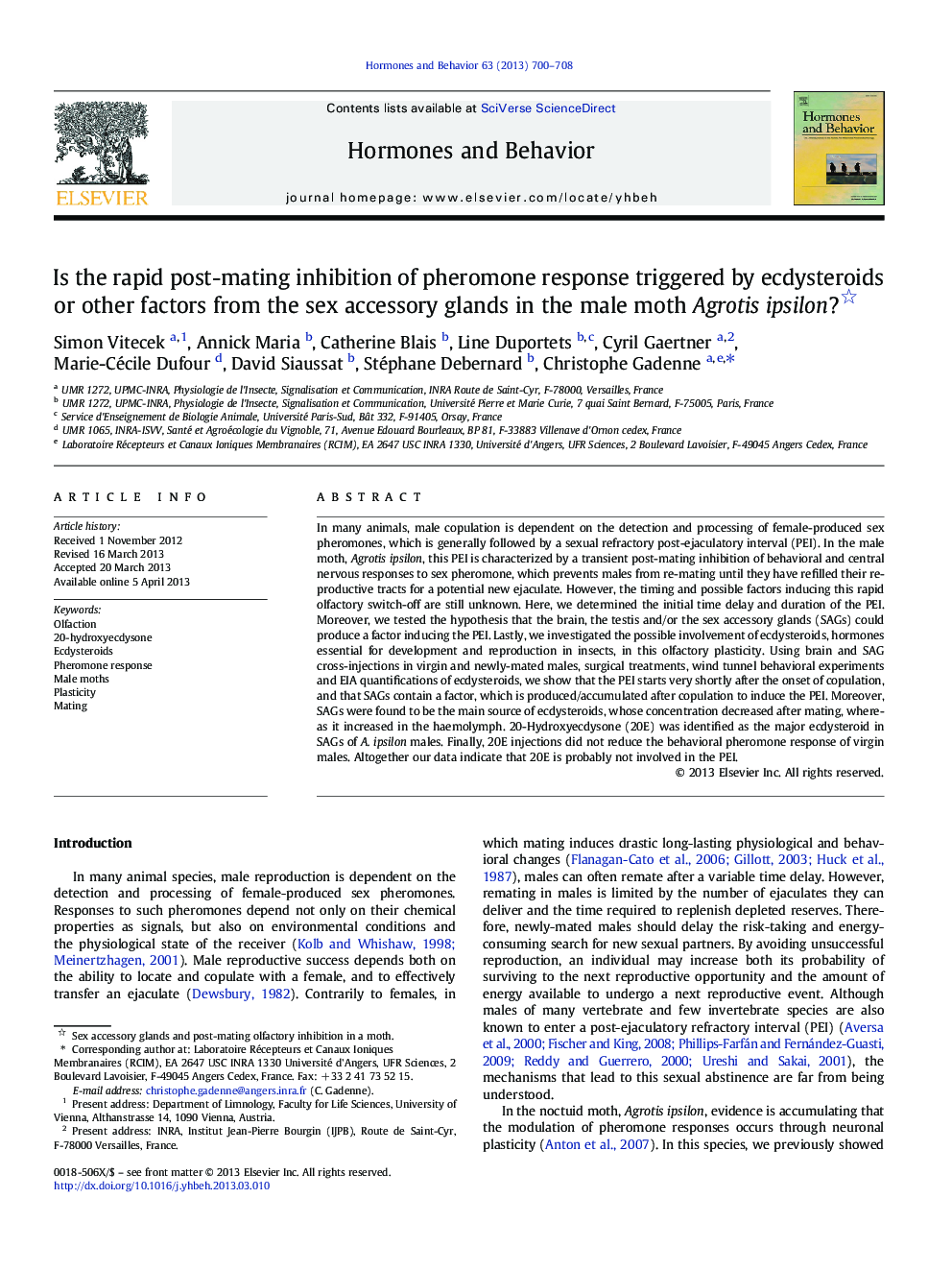| Article ID | Journal | Published Year | Pages | File Type |
|---|---|---|---|---|
| 10300908 | Hormones and Behavior | 2013 | 9 Pages |
Abstract
In many animals, male copulation is dependent on the detection and processing of female-produced sex pheromones, which is generally followed by a sexual refractory post-ejaculatory interval (PEI). In the male moth, Agrotis ipsilon, this PEI is characterized by a transient post-mating inhibition of behavioral and central nervous responses to sex pheromone, which prevents males from re-mating until they have refilled their reproductive tracts for a potential new ejaculate. However, the timing and possible factors inducing this rapid olfactory switch-off are still unknown. Here, we determined the initial time delay and duration of the PEI. Moreover, we tested the hypothesis that the brain, the testis and/or the sex accessory glands (SAGs) could produce a factor inducing the PEI. Lastly, we investigated the possible involvement of ecdysteroids, hormones essential for development and reproduction in insects, in this olfactory plasticity. Using brain and SAG cross-injections in virgin and newly-mated males, surgical treatments, wind tunnel behavioral experiments and EIA quantifications of ecdysteroids, we show that the PEI starts very shortly after the onset of copulation, and that SAGs contain a factor, which is produced/accumulated after copulation to induce the PEI. Moreover, SAGs were found to be the main source of ecdysteroids, whose concentration decreased after mating, whereas it increased in the haemolymph. 20-Hydroxyecdysone (20E) was identified as the major ecdysteroid in SAGs of A. ipsilon males. Finally, 20E injections did not reduce the behavioral pheromone response of virgin males. Altogether our data indicate that 20E is probably not involved in the PEI.
Related Topics
Life Sciences
Biochemistry, Genetics and Molecular Biology
Endocrinology
Authors
Simon Vitecek, Annick Maria, Catherine Blais, Line Duportets, Cyril Gaertner, Marie-Cécile Dufour, David Siaussat, Stéphane Debernard, Christophe Gadenne,
